 BC Wood recently announced that Premier David Eby will open the 22nd Annual Global Buyers Mission (GBM) on Friday, September 5th. This shows the significance of the GBM to British Columbia’s forestry and value-added wood industry. Kicking off the tradeshow, the Premier will join delegates on the tradeshow floor. Premier Eby’s presence highlights the critical role of British Columbia’s wood and forestry sector in driving innovation, sustainability, and economic growth. With recent U.S. decisions increasing countervailing duties on Canadian softwood lumber to over 35%, there’s an unprecedented level of uncertainty about how the market will be impacted. A newly announced panel presentation will analyse the escalating tariffs threatening to disrupt supply chains, inflate costs, and reshape the forestry industry. Forest Minister Parmar will introduce the panel and participants Mo Amir, Nick Arkle, Liz Kovach and Kurt Niquidet on September 4th.
BC Wood recently announced that Premier David Eby will open the 22nd Annual Global Buyers Mission (GBM) on Friday, September 5th. This shows the significance of the GBM to British Columbia’s forestry and value-added wood industry. Kicking off the tradeshow, the Premier will join delegates on the tradeshow floor. Premier Eby’s presence highlights the critical role of British Columbia’s wood and forestry sector in driving innovation, sustainability, and economic growth. With recent U.S. decisions increasing countervailing duties on Canadian softwood lumber to over 35%, there’s an unprecedented level of uncertainty about how the market will be impacted. A newly announced panel presentation will analyse the escalating tariffs threatening to disrupt supply chains, inflate costs, and reshape the forestry industry. Forest Minister Parmar will introduce the panel and participants Mo Amir, Nick Arkle, Liz Kovach and Kurt Niquidet on September 4th.

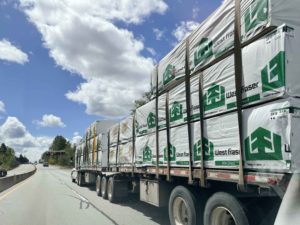 The US and Canada are fighting about lumber once again. The neighbors have feuded over softwood lumber since the 1980s. The US has periodically put in place duties to counteract what it claims are unfair subsidies and sales of lumber priced below market value. …Canada has long resisted changing its trade practices on lumber. But as the Trump administration has become more bellicose about its trade relationship with Canada, the country’s stance may be softening. On July 16, BC Premier Eby said that Canadian officials are now open to putting a quota on the amount of lumber exported to the US. The increased fees will benefit foresters in the US South… but the US would struggle to offset the lumber it gets from Canada in the short-term, potentially driving up housing prices. Here’s what to know about the commodity that has long dominated US-Canada trade tensions. [to access the full story a Bloomberg subscription is required]
The US and Canada are fighting about lumber once again. The neighbors have feuded over softwood lumber since the 1980s. The US has periodically put in place duties to counteract what it claims are unfair subsidies and sales of lumber priced below market value. …Canada has long resisted changing its trade practices on lumber. But as the Trump administration has become more bellicose about its trade relationship with Canada, the country’s stance may be softening. On July 16, BC Premier Eby said that Canadian officials are now open to putting a quota on the amount of lumber exported to the US. The increased fees will benefit foresters in the US South… but the US would struggle to offset the lumber it gets from Canada in the short-term, potentially driving up housing prices. Here’s what to know about the commodity that has long dominated US-Canada trade tensions. [to access the full story a Bloomberg subscription is required]
 Since Feb. 1, 2025, Canada has been plunged into a major trade war, triggered by U.S. President Donald Trump. …These measures threaten thousands of jobs and destabilize the deeply integrated supply chains between the two countries. This is not the first time Canada has faced such a threat. In 2018, similar tariffs were imposed by the same president but lifted in 2019 with the conclusion of the CUSMA. The difference today is the far greater scale and scope of the trade war. …The USW calls for a robust industrial strategy to reduce Canada’s dependence on U.S. trade. Priority must be given to steel, aluminum, wood and materials manufactured in Canada in all government-funded projects. Public money must be used to support Canadian jobs. The union is also calling for a tax credit to encourage the procurement of Canadian-manufactured goods, as well as the creation of strategic reserves of critical minerals to stabilize demand and secure supply chains.
Since Feb. 1, 2025, Canada has been plunged into a major trade war, triggered by U.S. President Donald Trump. …These measures threaten thousands of jobs and destabilize the deeply integrated supply chains between the two countries. This is not the first time Canada has faced such a threat. In 2018, similar tariffs were imposed by the same president but lifted in 2019 with the conclusion of the CUSMA. The difference today is the far greater scale and scope of the trade war. …The USW calls for a robust industrial strategy to reduce Canada’s dependence on U.S. trade. Priority must be given to steel, aluminum, wood and materials manufactured in Canada in all government-funded projects. Public money must be used to support Canadian jobs. The union is also calling for a tax credit to encourage the procurement of Canadian-manufactured goods, as well as the creation of strategic reserves of critical minerals to stabilize demand and secure supply chains.

 Lumber futures fell toward $610 per thousand board feet, retreating from the May-2022 high of $695.5 seen August 1st as weakening demand, recovering supply and tariff-driven trade distortions jointly sapped pricing power. Demand has cooled sharply with US single-family starts slipping to an 11-month low and building permits plunging, a direct consequence of elevated mortgage rates that curbs the core market for lumber. On the supply side, sawmills remain under-utilized but production has stabilized and Canadian mills are ramping output off a curtailment-heavy base, Statistics Canada shows production and shipments recovering into mid-2025, keeping physical availability ample. Tariffs meant to restrict Canadian flows are, in this oversupplied environment, simply redirecting trade and encouraging inventory build rather than creating scarcity, so inventories remain high and limit upside even as duties rise.
Lumber futures fell toward $610 per thousand board feet, retreating from the May-2022 high of $695.5 seen August 1st as weakening demand, recovering supply and tariff-driven trade distortions jointly sapped pricing power. Demand has cooled sharply with US single-family starts slipping to an 11-month low and building permits plunging, a direct consequence of elevated mortgage rates that curbs the core market for lumber. On the supply side, sawmills remain under-utilized but production has stabilized and Canadian mills are ramping output off a curtailment-heavy base, Statistics Canada shows production and shipments recovering into mid-2025, keeping physical availability ample. Tariffs meant to restrict Canadian flows are, in this oversupplied environment, simply redirecting trade and encouraging inventory build rather than creating scarcity, so inventories remain high and limit upside even as duties rise.
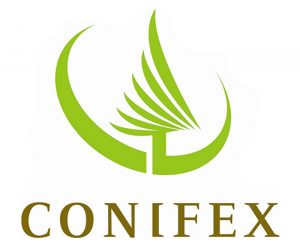 VANCOUVER, BC — Conifex Timber reported results for the first quarter ended March 31, 2025. EBITDA was negative $3.2 million for the quarter compared to EBITDA of $4.9 million in the first quarter of 2025 and negative $7.1 million in the second quarter of 2024. Net loss was $8.3 million for the quarter versus net income of $0.6 million in the previous quarter and net loss of $9.7 million in the second quarter of 2024. …Lumber production in the second quarter of 2025 totalled approximately 35.3 million board feet, representing operating rates of approximately 59% of annualized capacity. Second quarter production was negatively impacted by operating the sawmill on a four-day configuration, necessitated by reduced log availability.
VANCOUVER, BC — Conifex Timber reported results for the first quarter ended March 31, 2025. EBITDA was negative $3.2 million for the quarter compared to EBITDA of $4.9 million in the first quarter of 2025 and negative $7.1 million in the second quarter of 2024. Net loss was $8.3 million for the quarter versus net income of $0.6 million in the previous quarter and net loss of $9.7 million in the second quarter of 2024. …Lumber production in the second quarter of 2025 totalled approximately 35.3 million board feet, representing operating rates of approximately 59% of annualized capacity. Second quarter production was negatively impacted by operating the sawmill on a four-day configuration, necessitated by reduced log availability.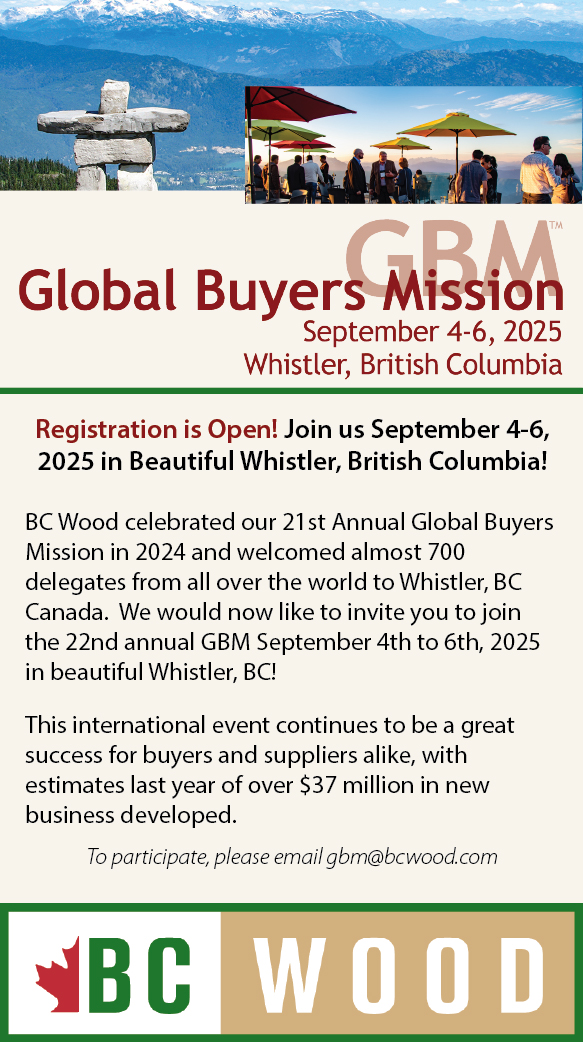 With recent U.S. decisions increasing countervailing duties on Canadian softwood lumber to over 35%, there’s an unprecedented level of uncertainty about how the market will be impacted. These escalating tariffs threaten to disrupt supply chains, inflate costs, and reshape the forestry industry. At BC Wood, we’re dedicated to helping you navigate these challenges. Which is why we will be hosting a Tariffs Panel at the Global Buyers Mission (September 4, 2025). Introduced by Minister Ravi Parmar, the panel will bring together top leaders to analyze the challenges, opportunities, and strategies amid escalating trade tensions. Moderated by Mo Amir, GM of SPF Precut Lumber, the panel will include: Nick Arkle, CEO, Gorman Brothers Lumber; Liz Kovach, President, Supply-Build Canada; and Kurt Niquidet, President, BC Lumber Trade Council.
With recent U.S. decisions increasing countervailing duties on Canadian softwood lumber to over 35%, there’s an unprecedented level of uncertainty about how the market will be impacted. These escalating tariffs threaten to disrupt supply chains, inflate costs, and reshape the forestry industry. At BC Wood, we’re dedicated to helping you navigate these challenges. Which is why we will be hosting a Tariffs Panel at the Global Buyers Mission (September 4, 2025). Introduced by Minister Ravi Parmar, the panel will bring together top leaders to analyze the challenges, opportunities, and strategies amid escalating trade tensions. Moderated by Mo Amir, GM of SPF Precut Lumber, the panel will include: Nick Arkle, CEO, Gorman Brothers Lumber; Liz Kovach, President, Supply-Build Canada; and Kurt Niquidet, President, BC Lumber Trade Council.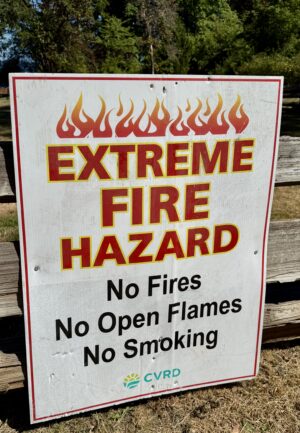 As of mid-August, the 2025 fire season is shaping up to be Canada’s second-worst on record. Since the spring, headlines across the country have consistently highlighted a community ordered to evacuate, a new fire sparking somewhere, or unique resource-sharing situations for fire management. Enter the newly-created
As of mid-August, the 2025 fire season is shaping up to be Canada’s second-worst on record. Since the spring, headlines across the country have consistently highlighted a community ordered to evacuate, a new fire sparking somewhere, or unique resource-sharing situations for fire management. Enter the newly-created 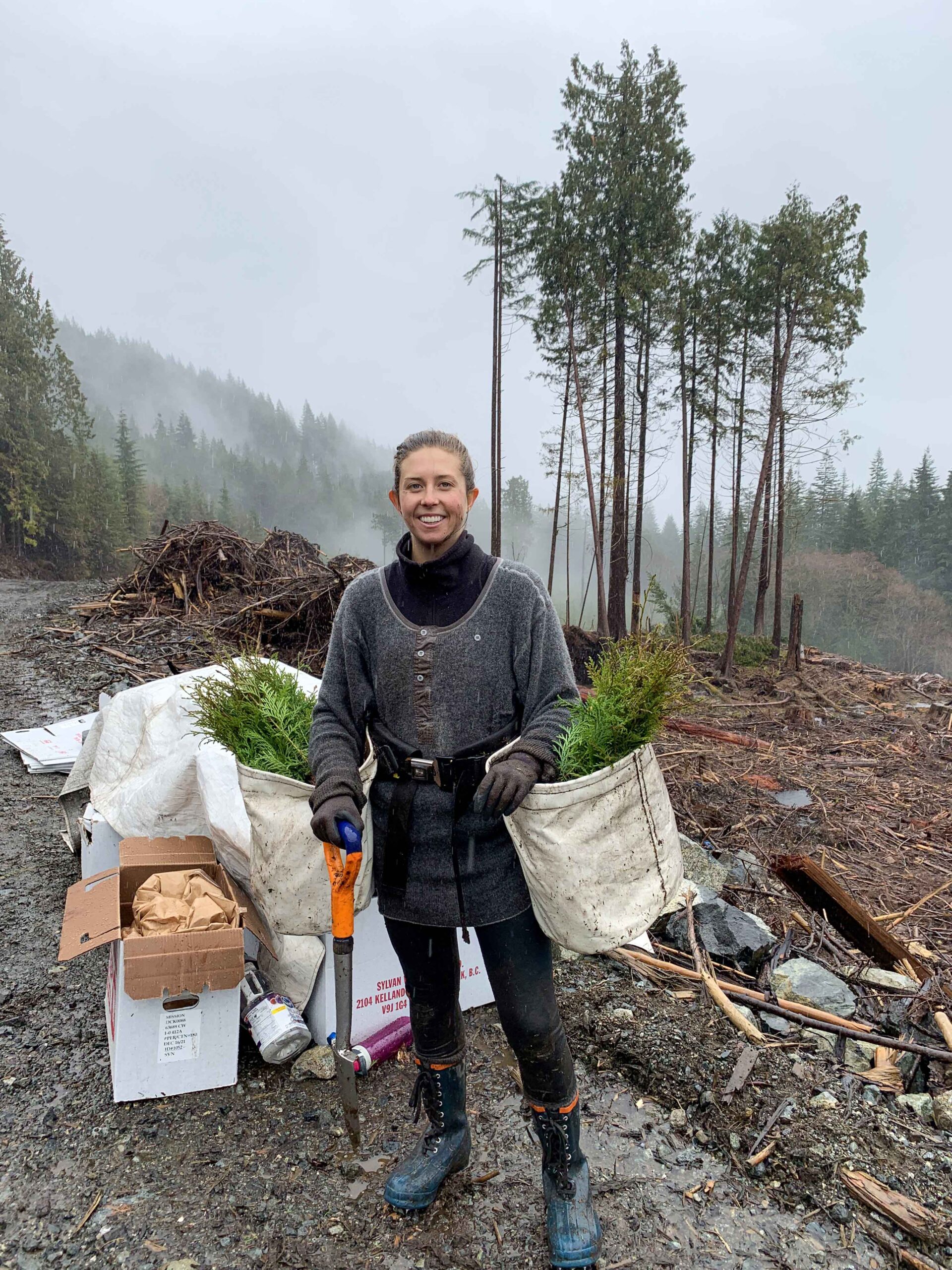 Early last September, firefighters were in the final stages of containing a 33,000-hectare wildfire complex in Alberta’s Jasper National Park. Elsewhere, park workers were already replanting the first batch of trees in the recently scorched earth. The Douglas firs were chosen because they resist fire better than other conifers, according to Marcia DeWandel, vegetation restoration specialist for Parks Canada. However, replanting so soon after a fire is much more exception than rule. Replanting is typically expensive, time consuming, labour intensive — and doesn’t always work. …In most cases, it can take years for replanting to begin after a fire. …”It’s actually really important not to speed and just go right after a fire,” says Jess Kaknevicius, CEO of Forests Canada, one of the organizations supporting Ogoki’s replanting. …In some replanted areas, ensuring survival is easier said than done, especially when dealing with other effects of climate change.
Early last September, firefighters were in the final stages of containing a 33,000-hectare wildfire complex in Alberta’s Jasper National Park. Elsewhere, park workers were already replanting the first batch of trees in the recently scorched earth. The Douglas firs were chosen because they resist fire better than other conifers, according to Marcia DeWandel, vegetation restoration specialist for Parks Canada. However, replanting so soon after a fire is much more exception than rule. Replanting is typically expensive, time consuming, labour intensive — and doesn’t always work. …In most cases, it can take years for replanting to begin after a fire. …”It’s actually really important not to speed and just go right after a fire,” says Jess Kaknevicius, CEO of Forests Canada, one of the organizations supporting Ogoki’s replanting. …In some replanted areas, ensuring survival is easier said than done, especially when dealing with other effects of climate change.  CALGARY, Alberta — Wildfire season is in full effect across much of Canada, and Canadians are facing significant impacts. …Corey Hogan, Parliamentary Secretary to the Honourable Tim Hodgson, announced $45.7 million in funding for 30 projects across Canada through Natural Resources Canada’s Build and Mobilize Foundational Wildland Fire Knowledge program. These projects are driving research focused on protecting Canadians from the growing threat of wildfires, strengthening wildfire risk assessments and improving mitigation and adaptive forestry practices. We are also helping Indigenous communities access the tools needed to lead on wildfire readiness in their communities and backing Indigenous-led projects that support fire stewardship.
CALGARY, Alberta — Wildfire season is in full effect across much of Canada, and Canadians are facing significant impacts. …Corey Hogan, Parliamentary Secretary to the Honourable Tim Hodgson, announced $45.7 million in funding for 30 projects across Canada through Natural Resources Canada’s Build and Mobilize Foundational Wildland Fire Knowledge program. These projects are driving research focused on protecting Canadians from the growing threat of wildfires, strengthening wildfire risk assessments and improving mitigation and adaptive forestry practices. We are also helping Indigenous communities access the tools needed to lead on wildfire readiness in their communities and backing Indigenous-led projects that support fire stewardship.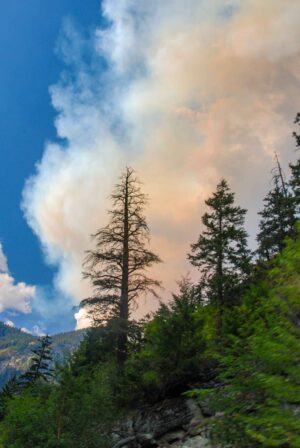

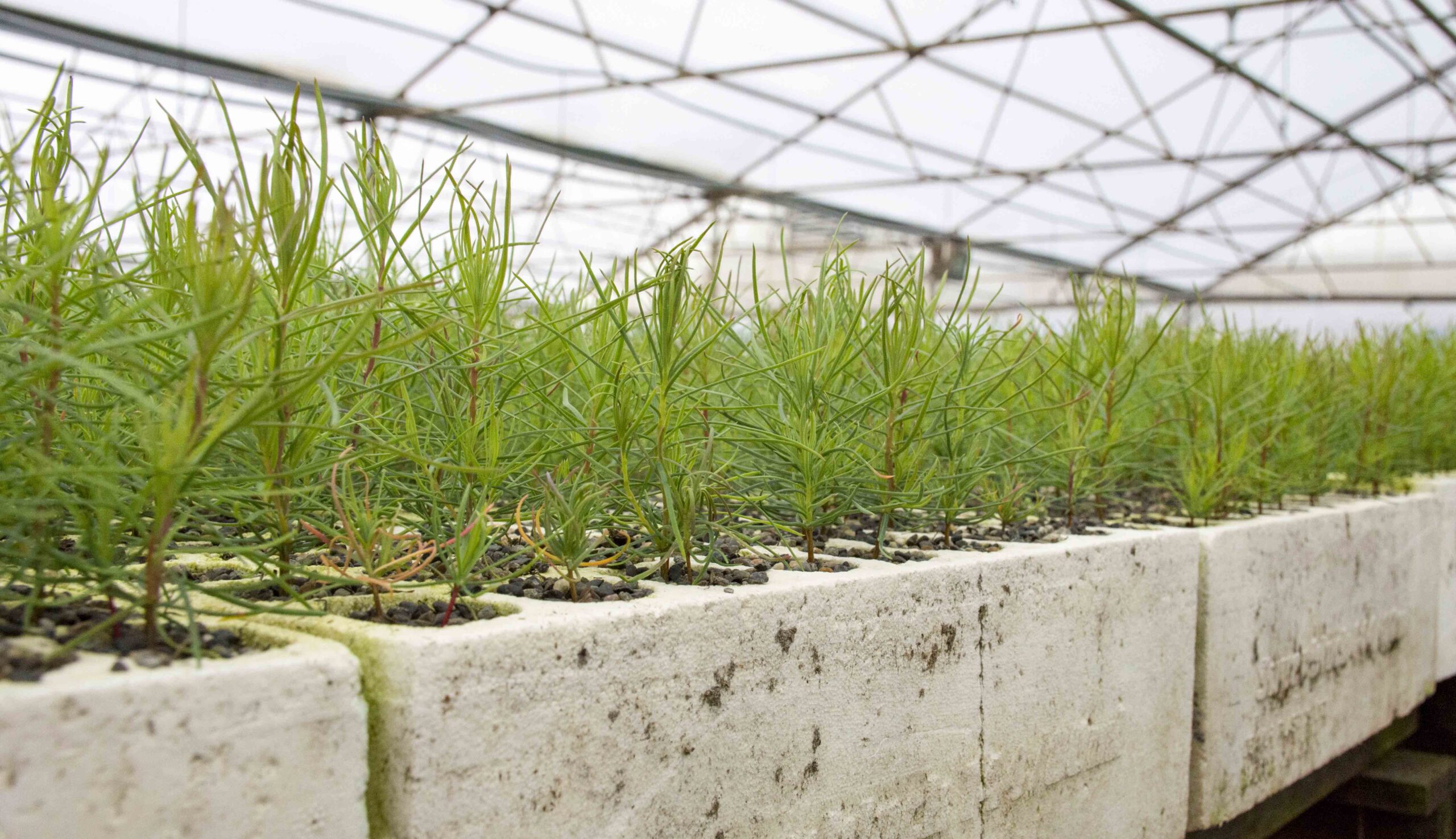 The number of trees planted in British Columbia is set to decline for a third year in a row, falling a combined 135 million seedlings short of a B.C. government’s election promise to increase planting amid a string of devastating wildfire seasons. In B.C., the logging industry is legally required to reforest after harvesting. But as harvest levels have dropped, so too has tree planting. The province planted 281 million tree seedlings in 2024. But by the end of the 2025 season, that number is expected to drop to 238 million, according to the Ministry of Forests. By the end of 2026, projections from the Canadian Tree Nursery Association (CTNA) suggest the number could fall even further to 226 million — far short of the 300 million trees promised by the NDP government in the last election.
The number of trees planted in British Columbia is set to decline for a third year in a row, falling a combined 135 million seedlings short of a B.C. government’s election promise to increase planting amid a string of devastating wildfire seasons. In B.C., the logging industry is legally required to reforest after harvesting. But as harvest levels have dropped, so too has tree planting. The province planted 281 million tree seedlings in 2024. But by the end of the 2025 season, that number is expected to drop to 238 million, according to the Ministry of Forests. By the end of 2026, projections from the Canadian Tree Nursery Association (CTNA) suggest the number could fall even further to 226 million — far short of the 300 million trees promised by the NDP government in the last election.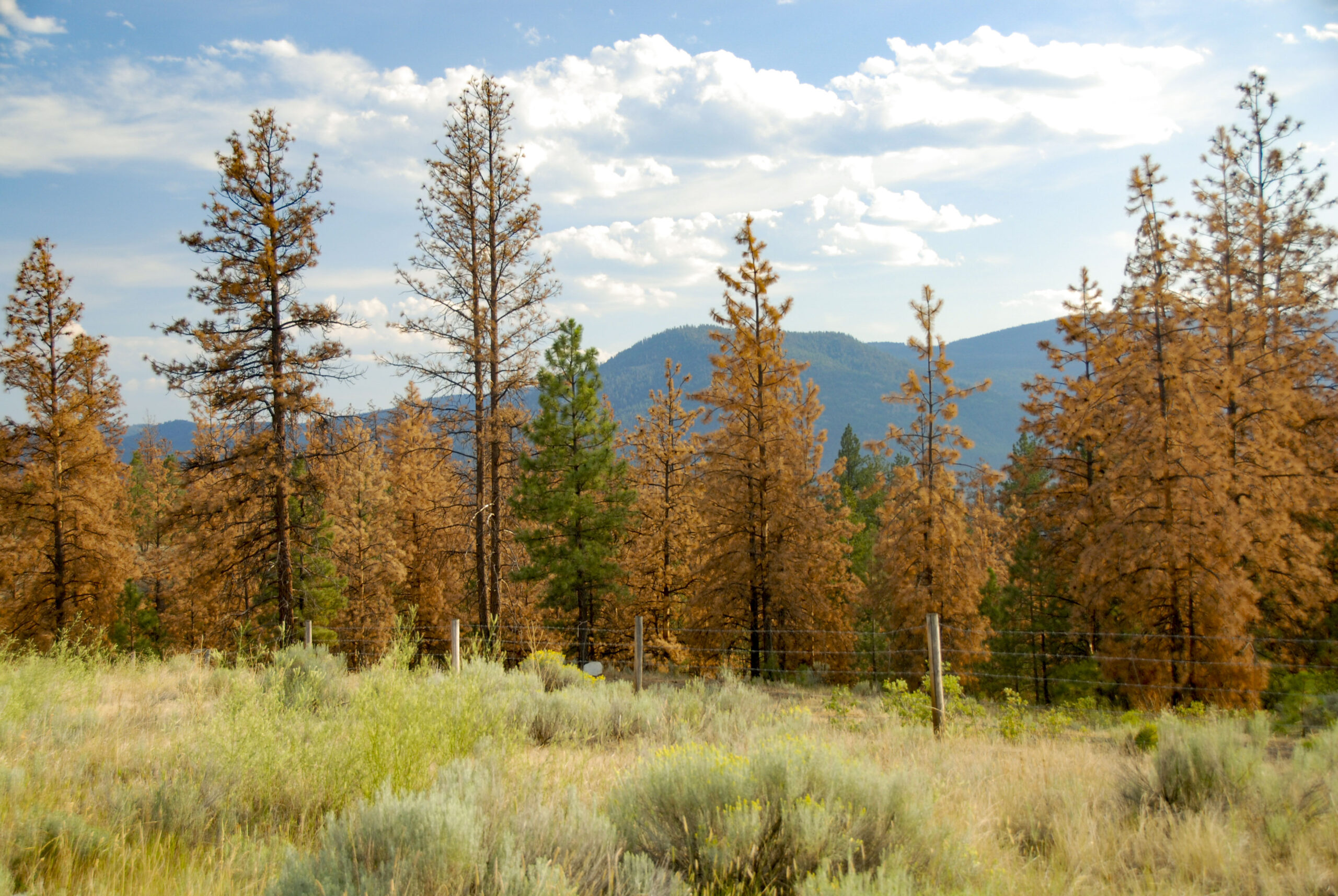 Ottawa is offering $45.7 million for projects in B.C. and across Canada that advance knowledge about wildfires. The projects will be focused on protecting Canadians from the growing threat of wildfires, strengthening wildfire risk assessments, and improving mitigation and adaptive forestry practices. …The Vancouver-based Métis Wildfire Community Research Initiative is among the funding recipients. “Our approach is different because we are building strong relationships with local people.” said Joe Desjarlais, Director of Research for the B.C. Metis Foundation. “We’re training them to do wildfire research, to recover their own knowledge for their own benefit, to give them a voice.” …Natural Resources Canada said annual national costs for fighting wildland fire total over $1 billion. It says fire-suppression costs could double by 2040.
Ottawa is offering $45.7 million for projects in B.C. and across Canada that advance knowledge about wildfires. The projects will be focused on protecting Canadians from the growing threat of wildfires, strengthening wildfire risk assessments, and improving mitigation and adaptive forestry practices. …The Vancouver-based Métis Wildfire Community Research Initiative is among the funding recipients. “Our approach is different because we are building strong relationships with local people.” said Joe Desjarlais, Director of Research for the B.C. Metis Foundation. “We’re training them to do wildfire research, to recover their own knowledge for their own benefit, to give them a voice.” …Natural Resources Canada said annual national costs for fighting wildland fire total over $1 billion. It says fire-suppression costs could double by 2040.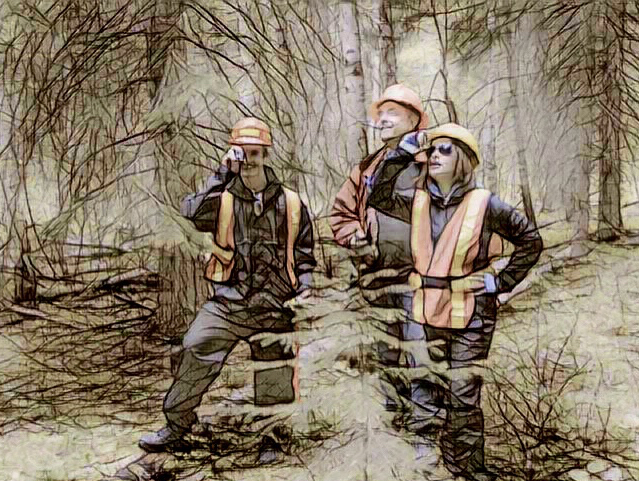 CNC’s Applied Research team received a $170,775 Applied Research Tools and Instruments (ARTI) grant through the Natural Sciences and Engineering Research Council of Canada (NSERC) for the creation of a state-of-the-art remote sensing lab. …The grant allows for the acquisition of terrestrial LiDAR scanners, allowing researchers to capture, analyze and better understand individual tree characteristics, forest structure, and wildfire hazards, among other forest attributes. CNC research fellow Dr. Pablo Crespell will lead research activities related to remote sensing lab purchases and operation, including drones, LiDAR sensors and scanners, multispectral sensors, software applications, and computer hardware. Grant funds will also be used to support the costs of relevant training for CNC research staff, such as drone pilot training and new analysis approaches.
CNC’s Applied Research team received a $170,775 Applied Research Tools and Instruments (ARTI) grant through the Natural Sciences and Engineering Research Council of Canada (NSERC) for the creation of a state-of-the-art remote sensing lab. …The grant allows for the acquisition of terrestrial LiDAR scanners, allowing researchers to capture, analyze and better understand individual tree characteristics, forest structure, and wildfire hazards, among other forest attributes. CNC research fellow Dr. Pablo Crespell will lead research activities related to remote sensing lab purchases and operation, including drones, LiDAR sensors and scanners, multispectral sensors, software applications, and computer hardware. Grant funds will also be used to support the costs of relevant training for CNC research staff, such as drone pilot training and new analysis approaches. …as climate change fuels more frequent and intense wildfires, governments can reduce the damage and protect lives with proactive, targeted actions. That means strengthening policies that guide where and how we build, investing in land and fuel-management strategies, supporting Indigenous leadership and stewardship, expanding emergency-response capacity and accelerating emissions reduction. The solutions are within reach, but they require governments to lead with urgency, coordination and commitment. …Here are five key actions governments can take to reduce wildfire risk — noting that no single strategy can solve the problem by itself: Stop encouraging building in harm’s way; Make new development fire-resilient; Manage forests and reduce wildfire fuel; Strengthen firefighting capacity; and Cut carbon pollution to avoid runaway risk. Governments at all levels face a clear choice: continue with business as usual and see fire seasons grow worse or take bold action to reduce risk, protect people and ensure public resources are spent wisely.
…as climate change fuels more frequent and intense wildfires, governments can reduce the damage and protect lives with proactive, targeted actions. That means strengthening policies that guide where and how we build, investing in land and fuel-management strategies, supporting Indigenous leadership and stewardship, expanding emergency-response capacity and accelerating emissions reduction. The solutions are within reach, but they require governments to lead with urgency, coordination and commitment. …Here are five key actions governments can take to reduce wildfire risk — noting that no single strategy can solve the problem by itself: Stop encouraging building in harm’s way; Make new development fire-resilient; Manage forests and reduce wildfire fuel; Strengthen firefighting capacity; and Cut carbon pollution to avoid runaway risk. Governments at all levels face a clear choice: continue with business as usual and see fire seasons grow worse or take bold action to reduce risk, protect people and ensure public resources are spent wisely. The human side of forestry is often overlooked but always present. Seeing the forest for the trees in this case means connecting the dots between the many ways that people interact with, benefit from and shape natural spaces, and the consequences these activities are having on everything from environmental sustainability to community wellbeing. In this issue, we delve into the social sciences of forestry, highlighting how the academic work, career paths and actions taken by our UBC Forestry community are shaping the future for the sake of humans and the planet.
The human side of forestry is often overlooked but always present. Seeing the forest for the trees in this case means connecting the dots between the many ways that people interact with, benefit from and shape natural spaces, and the consequences these activities are having on everything from environmental sustainability to community wellbeing. In this issue, we delve into the social sciences of forestry, highlighting how the academic work, career paths and actions taken by our UBC Forestry community are shaping the future for the sake of humans and the planet. SMITHERS – The Forest Practices Board has released the results of its investigation into a complaint about logging in the Lemieux and Gardner Creek watersheds, 30 kilometres southeast of Smithers. A resident alleged that over-harvesting had dried up creeks and wells, and that logging proceeded without proper public consultation. Board investigators examined recent harvesting, road construction and maintenance by three licence holders: BC Timber Sales (BCTS), Kyah Development Corporation (KDC) and the holder of woodlot licence W0104. Investigators assessed whether licensees met legal requirements for water management and public review. All three licensees complied with requirements for public review. BCTS and KDC exceeded requirements by voluntarily sharing operational-planning information with stakeholders. BCTS and KDC also met all water- management requirements.
SMITHERS – The Forest Practices Board has released the results of its investigation into a complaint about logging in the Lemieux and Gardner Creek watersheds, 30 kilometres southeast of Smithers. A resident alleged that over-harvesting had dried up creeks and wells, and that logging proceeded without proper public consultation. Board investigators examined recent harvesting, road construction and maintenance by three licence holders: BC Timber Sales (BCTS), Kyah Development Corporation (KDC) and the holder of woodlot licence W0104. Investigators assessed whether licensees met legal requirements for water management and public review. All three licensees complied with requirements for public review. BCTS and KDC exceeded requirements by voluntarily sharing operational-planning information with stakeholders. BCTS and KDC also met all water- management requirements.






 NOVA SCOTIA –More than one hundred homes have been evacuated as an out of control wildfire near West Dalhousie in Annapolis County continues to burn Friday morning. The fire broke out Wednesday on the north side of Long Lake, about 20 kilometres east of Annapolis Royal, Nova Scotia. The provincial Department of Natural Resources has said a lightning strike caused the fire. …The national weather forecaster has issued an air quality statement for Annapolis County and parts of Halifax County, saying smoke from the wildfires is reducing air quality in the area, and that people who are more likely to be impacted by smoke — including pregnant people, infants and young children, people with chronic health conditions and people who work outdoors — should avoid strenuous outdoor activities.
NOVA SCOTIA –More than one hundred homes have been evacuated as an out of control wildfire near West Dalhousie in Annapolis County continues to burn Friday morning. The fire broke out Wednesday on the north side of Long Lake, about 20 kilometres east of Annapolis Royal, Nova Scotia. The provincial Department of Natural Resources has said a lightning strike caused the fire. …The national weather forecaster has issued an air quality statement for Annapolis County and parts of Halifax County, saying smoke from the wildfires is reducing air quality in the area, and that people who are more likely to be impacted by smoke — including pregnant people, infants and young children, people with chronic health conditions and people who work outdoors — should avoid strenuous outdoor activities.


